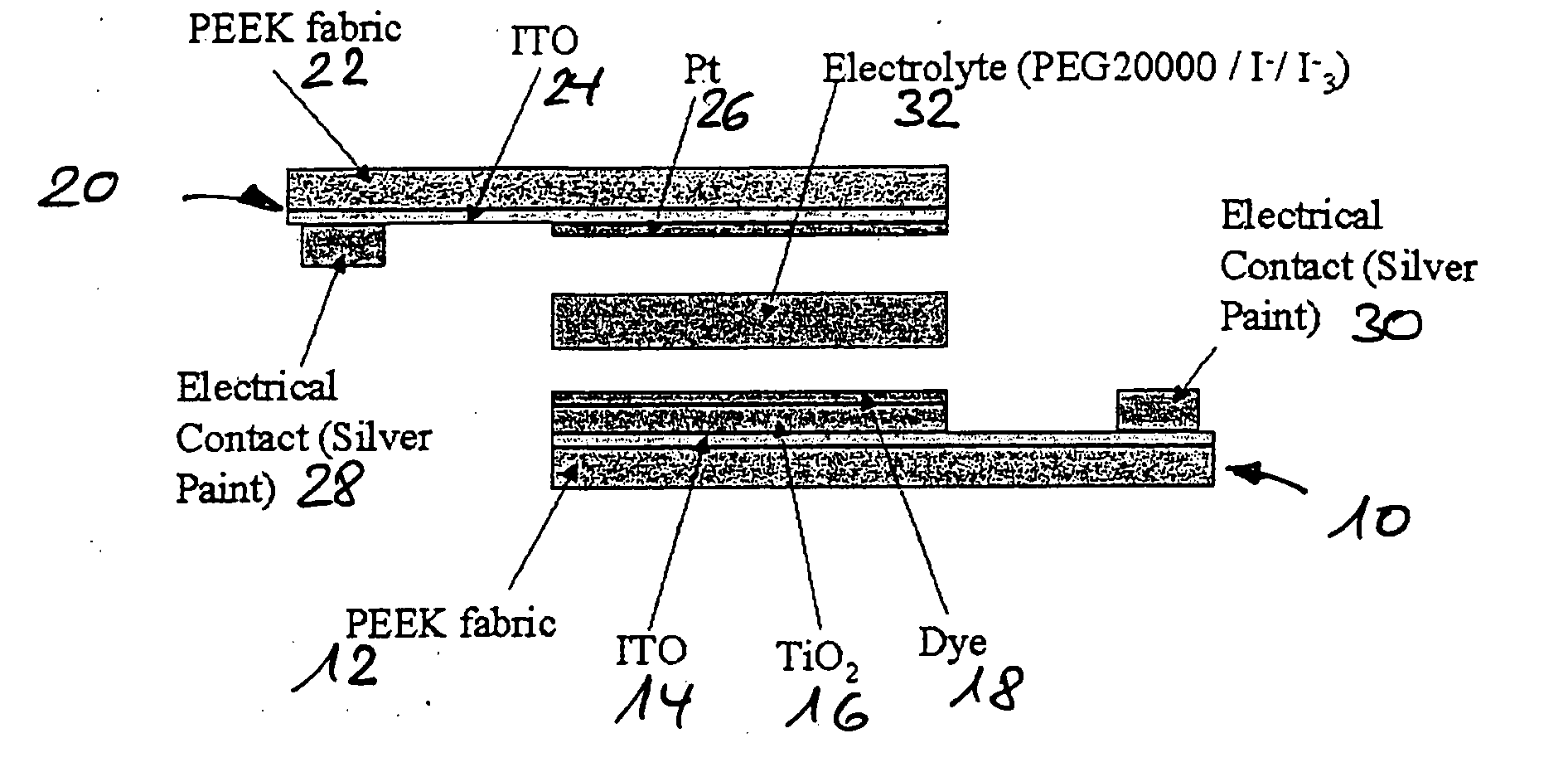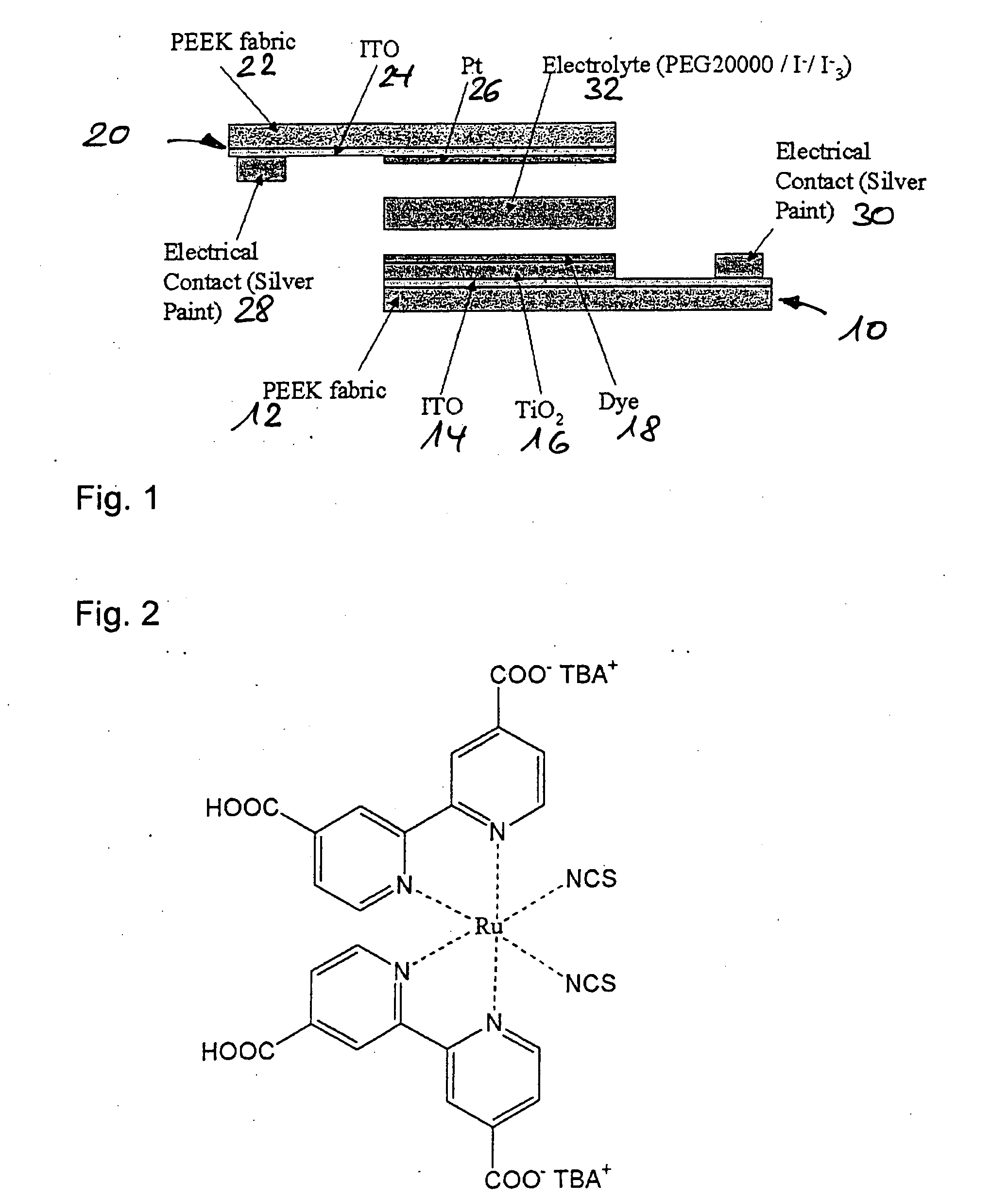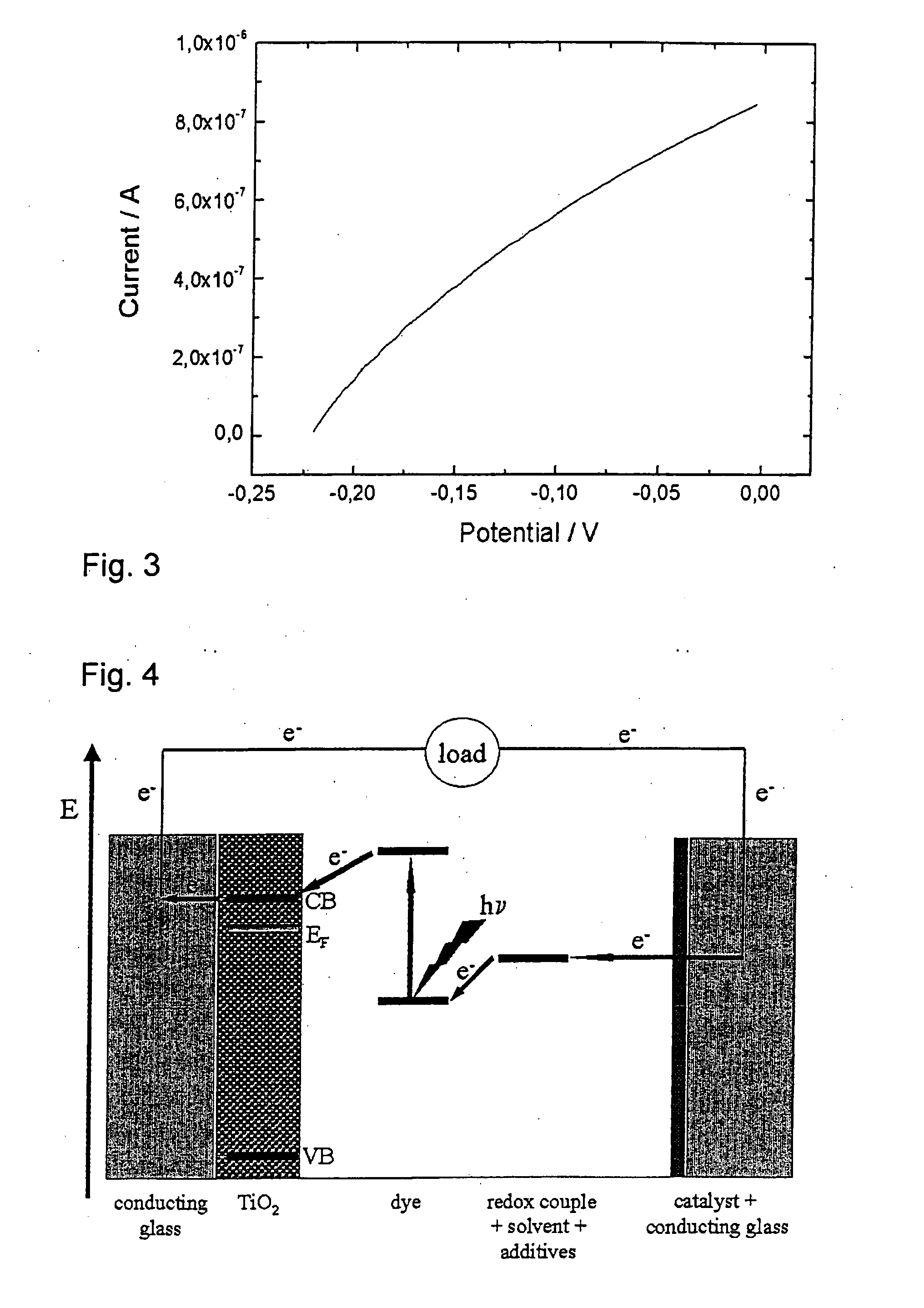Photovoltaic Cell
a photovoltaic cell and photovoltaic cell technology, applied in the field of photovoltaic cells, can solve the problems of unsuitably high sheet resistance, unstable conditions, inherent brittleness of materials, etc., and achieve the effects of favourable mechanical flexibility and connecting properties, favourable electrical contact, and positive effect on efficiency
- Summary
- Abstract
- Description
- Claims
- Application Information
AI Technical Summary
Benefits of technology
Problems solved by technology
Method used
Image
Examples
Embodiment Construction
[0026]Furthermore, the structure and the fabrication of the photovoltaic cell according to a first preferred embodiment of the present invention are explained with reference to FIGS. 1 to 3. Since production aspects are also important to achieve the desired properties, in the following description each active layer according to FIG. 1 is described and linked in conjunction with relevant, particularly suitable fabrication steps.
[0027]In the exemplary embodiment of the photovoltaic cell in FIG. 1, a conductingly configured support substrate 10 comprises an underlying fabric layer 12 as PEEK fabric which is coated with indium-doped SnO2 (=ITO) as a conducting layer 14 in an otherwise known manner.
[0028]A metal oxide-semiconductor layer of TiO2 having a thickness of 1 to 20 μm is applied to these layers 12, 14, wherein for this purpose a 5 wt.% TiO2 solution in ethanol was sprayed onto the ITO-modified fabric and after drying or vaporising the solvent, the coating was exposed to a press...
PUM
 Login to View More
Login to View More Abstract
Description
Claims
Application Information
 Login to View More
Login to View More - R&D
- Intellectual Property
- Life Sciences
- Materials
- Tech Scout
- Unparalleled Data Quality
- Higher Quality Content
- 60% Fewer Hallucinations
Browse by: Latest US Patents, China's latest patents, Technical Efficacy Thesaurus, Application Domain, Technology Topic, Popular Technical Reports.
© 2025 PatSnap. All rights reserved.Legal|Privacy policy|Modern Slavery Act Transparency Statement|Sitemap|About US| Contact US: help@patsnap.com



